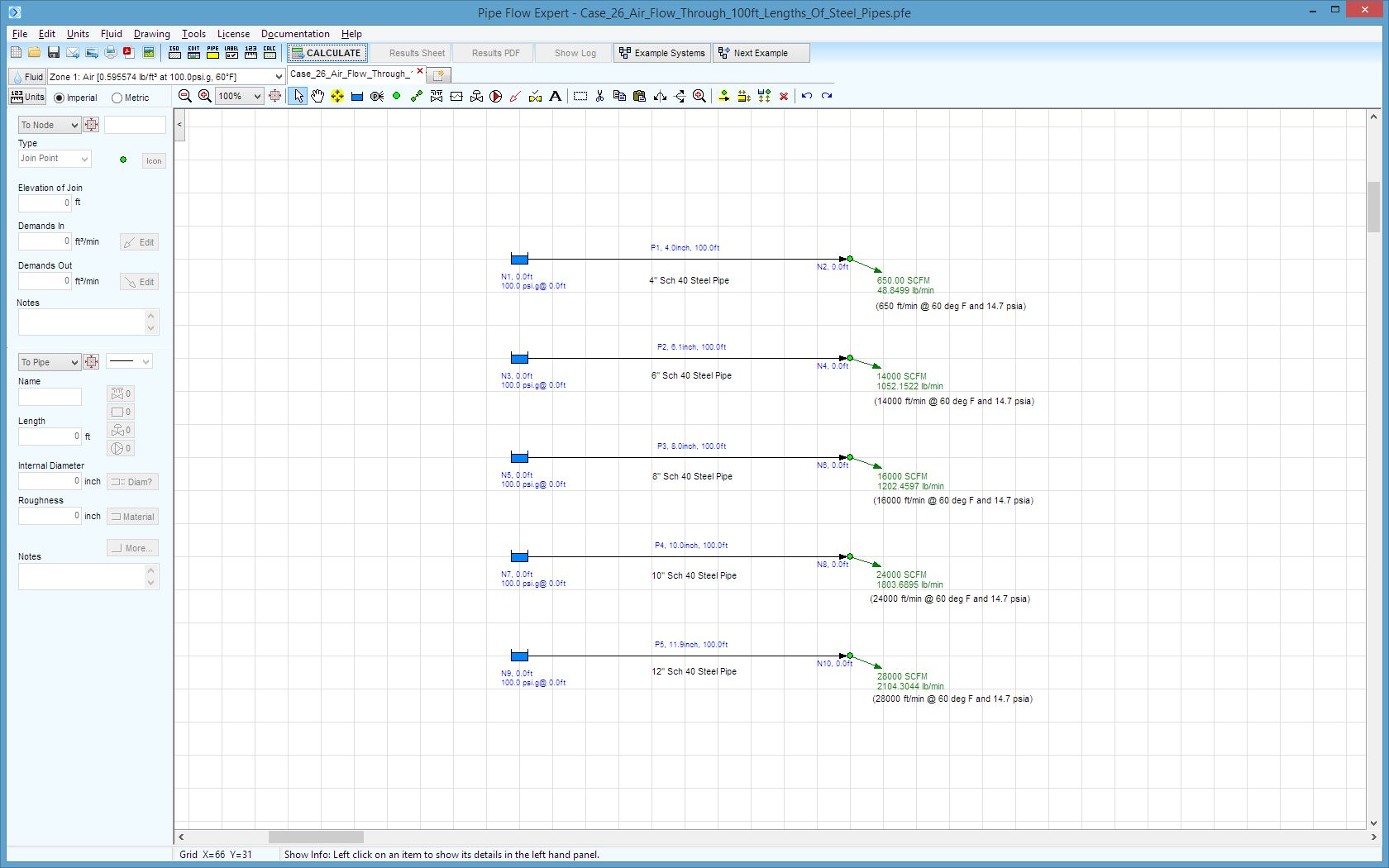Case 26: Air – Flow Through 100ft Lengths of Steel Pipes
Reference: Flow of Fluids – Technical Paper No 410, 1988, Crane Co. Appendix B-15.
Pipe Flow Expert File: Case_38_Air_Flow_Through_100ft_Lengths_Of_Steel_Pipes.pfe
Problem Description:
Compressed air at 100 psi gauge and 60°F flows through 100 feet long schedule 40 steel pipes.
Find the pressure drop in each of the pipes.

Fluid Data: Air at 100 psi gauge and 60°F, density 0.595574 lb/ft3, viscosity 0.018095 centipoise.
Pipe Data: Internal diameters of standard Schedule 40 Steel pipe, various sizes. Roughness 0.001811 inches.
Calculation Method: General Isothermal Flow equation, Node Adjust Method.
Standard Atmospheric Model: 60 °F, 14.696 psi absolute
Gas Physical Model: Ideal Gas Law
Result Comparison:
|
Pipe Details |
Free Air ft³/min |
Compressed Flow ft³/min |
Published Pressure Drop (psi) |
Pipe Flow Expert Pressure Drop (psi) |
|
4.0” Diameter Schedule 40 Steel Pipe, 100 ft long |
650 |
83.3 |
0.086 |
0.0832 |
|
6.0” Diameter Schedule 40 Steel Pipe, 100 ft long |
14000 |
1794 |
4.21 |
4.2228 |
|
8.0” Diameter Schedule 40 Steel Pipe, 100 ft long |
16000 |
2051 |
1.33 |
1.3121 |
|
10.0” Diameter Schedule 40 Steel Pipe, 100 ft long |
24000 |
3076 |
0.918 |
0.9029 |
|
12.0” Diameter Schedule 40 Steel Pipe, 100 ft long |
28000 |
3588 |
0.505 |
0.4957 |
Commentary:
The published data and the calculated results compare well. The density of Air at 100 psi.g and 60°F used in the calculation of the published results was not specified, and the results were based on a non-compressible calculation since the pressure drop was small.
Pipe Flow Expert’s gas helper calculated the density of the Air at 0.595574 lb/ft3 and used a compressible flow equation to calculate the results.

